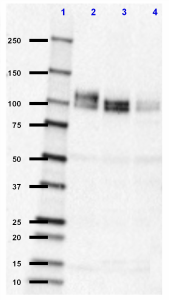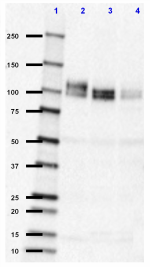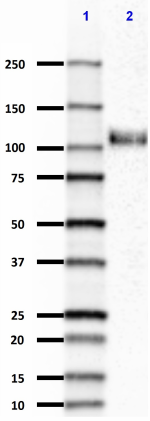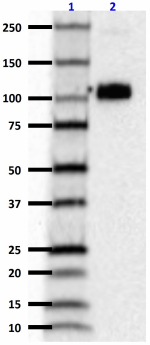- Clone
- 1G6 (See other available formats)
- Regulatory Status
- RUO
- Other Names
- AAA, ABETA, ABPP, AD1, APPI, CTFgamma, CVAP, PN-II, PN2, Amyloid beta A4 protein, preA4, protease nexin-II, peptidase nexin-II, beta-amyloid peptide, alzheimer disease amyloid protein, cerebral vascular amyloid peptide, APP, Amyloid Precursor Protein
- Previously
-
Covance Catalog# SIG-39181
- Isotype
- Mouse IgG2b, κ
- Ave. Rating
- Submit a Review
- Product Citations
- 1 publications

| Cat # | Size | Price | Quantity Check Availability | Save | ||
|---|---|---|---|---|---|---|
| 806004 | 200 µL | £431 | ||||
Amyloid beta (Aβ or Abeta) denotes peptides of 36–43 amino acids in length that are crucially involved in Alzheimer's disease as the main component of the amyloid plaques found in the brains of Alzheimer patients. The peptides result from the amyloid precursor protein (APP), which is cut by certain enzymes to yield Aβ. Aβ molecules can aggregate to form oligomers (known as "seeds") which are believed to be able to induce other Aβ molecules to also take the misfolded oligomeric form, leading to a chain reaction akin to a prion infection. The seeds or the resulting amyloid plaques are toxic to nerve cells. The other protein implicated in Alzheimer's disease, tau protein, also forms such prion-like misfolded oligomers, and there is some evidence that misfolded Aβ can induce tau to misfold.
Product DetailsProduct Details
- Verified Reactivity
- Human, Mouse, Rat
- Antibody Type
- Monoclonal
- Host Species
- Mouse
- Formulation
- Phosphate-buffered solution (no preservatives or carrier proteins).
- Preparation
- The antibody was purified by affinity chromatography.
- Concentration
- 1 mg/ml
- Storage & Handling
- The antibody solution should be stored undiluted between 2°C and 8°C. Please note the storage condition for this antibody has been changed from -20°C to between 2°C and 8°C. You can also check your vial or your CoA to find the most accurate storage condition for this antibody.
- Application
-
WB - Quality tested
- Recommended Usage
-
Each lot of this antibody is quality control tested by Western blotting. For Western blotting, the suggested use of this reagent is 1 - 10 µg per ml. It is recommended that the reagent be titrated for optimal performance for each application.
- Application Notes
-
The epitope lies within amino acids 573-596 of amyloid precursor protein. Cross-reactivity to fragments may be expected based on the location of the epitope.
Additional reported applications (for the relevant formats) include: immunoprecipitation2. -
Application References
(PubMed link indicates BioLegend citation) -
- Halford RW and Russell DW. Reduction of cholesterol synthesis in the mouse brain does not affect amyloid formation in Alzheimer's disease, but does extend lifespan. PNAS; 106: 3502 - 3506, Mar 2009. (WB)
- Welzel AT, et al. 2014. Biochemistry 24:3908. (IP)
- Product Citations
-
- RRID
-
AB_2564694 (BioLegend Cat. No. 806004)
Antigen Details
- Biology Area
- Cell Biology, Neurodegeneration, Neuroscience, Protein Misfolding and Aggregation
- Molecular Family
- APP/β-Amyloid
- Gene ID
- 351 View all products for this Gene ID
- UniProt
- View information about APP 573-596 on UniProt.org
Related Pages & Pathways
Pages
Related FAQs
- How many biotin molecules are per antibody structure?
- We don't routinely measure the number of biotins with our antibody products but the number of biotin molecules range from 3-6 molecules per antibody.
Other Formats
View All APP, 573-596 Reagents Request Custom Conjugation| Description | Clone | Applications |
|---|---|---|
| Biotin anti-APP, 573-596 | 1G6 | WB |
| Purified anti-APP, 573-596 | 1G6 | WB,IP |
Compare Data Across All Formats
This data display is provided for general comparisons between formats.
Your actual data may vary due to variations in samples, target cells, instruments and their settings, staining conditions, and other factors.
If you need assistance with selecting the best format contact our expert technical support team.
-
Biotin anti-APP, 573-596

Western blot of Biotin anti-APP, 573-596 antibody (clone 1G6... 
Western blot of Biotin anti-APP, 573-596 antibody (clone 1G6... -
Purified anti-APP, 573-596

Western blot of purified anti-APP, 573-596 antibody (clone 1... 
Western blot of purified anti-APP, 573-596 antibody (clone 1...


 Login / Register
Login / Register 


















Follow Us